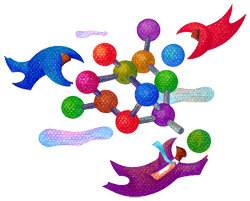Tips for Active Listening
 We all have times when we’re distracted. Or our emotions get in the way. Instead of listening, we find ourselves preparing a rebuttal. Here are some good tips for active listening. Try them and let us know how they work for you!
We all have times when we’re distracted. Or our emotions get in the way. Instead of listening, we find ourselves preparing a rebuttal. Here are some good tips for active listening. Try them and let us know how they work for you!
- Know your own communication style. If you are well aware of your style of communication, you’ll know what you need to do to create a lasting impression with other.
- Concentration. If you find it very difficult to concentrate on what is being said, try repeating their words mentally as they say them. This will help reinforce their message and keep you focused.
- Disturbance. If there is a “side” conversation going on in the office, move. Try a quieter room or find a spot in another part of the room.
- Repetition. Use reflective words so that your interpretation of the conversation is correct. For example, use words such as: “What I’m hearing is. . .” and “Sounds like you are saying. . .”
- Emotional Distraction. If you find yourself reacting emotionally to what someone said, admit it. Ask for more information or for better clarity.
- Interruption. Finally, allow the person speaking to you to finish each question before you answer. Don’t interrupt.
LMJA works with organizational challenges. If you need help or would like to discuss your options, give us a call at 301-670-0051, or email me at Leadership@lmja.com.
Where will you be, this time next year?
 It’s the beginning of a fiscal year. A year from now you’d like to look back on the last 12 months and be proud of what you’ve accomplished. Is that even possible in our changing environment? Can I create a plan that not only motivates me, but motivates all the people who work for me?
It’s the beginning of a fiscal year. A year from now you’d like to look back on the last 12 months and be proud of what you’ve accomplished. Is that even possible in our changing environment? Can I create a plan that not only motivates me, but motivates all the people who work for me?
I know what you’re thinking. . .
“Maybe if I owned my own business, I could make plans!”
“If I work with blinders on, maybe I can just keep pluggin’ away and not pay attention to all the changes happening around me.”
It’s not easy. In this changing world, is there any point in trying to plan? The answer is a resounding YES! But the planning has to be smart. Consider these points.
Set Priorities. As of today, what are the priorities of your organization? The basic priorities probably won’t change much over the year, so think high level priorities and write them down.
Focus Energy. In every job, there are lots of things we do that sap us of energy, but really don’t move the organization forward. So what we are talking about here, is focusing on the items that have more to do with the overall health of the organization, rather than your particular job.
Identify Resources and Strength Operations. Identify the high level priorities and decide where your energies should be spent. Look around your organization and beyond for resources that can help. Are there groups or departments who can help you strengthen your talents and accomplish a goal? Is there an individual with particular skills who can help develop those same skills throughout your department? Should you go outside your organization? Sometimes training is best accomplished by someone from the outside. A third-party resource may not have preconceived notions on what you should learn. Instead, outside resources are generally better at listening to you and coming up with the training customized to your needs.
Establish Common Goals. We all have different work to do, but our goals can be universal. Knowing what my part is in reaching a goal helps me keep on track. And measuring the activity leading up to the goal can remind me each month of the importance of the goal.
Assess and Adjust. When the organization takes a turn, you can adjust your priorities, energy, resources and goals. Chances are, you’ll only need to adjust them slightly, making everyone feel better about the change in the organization.
Measure Accomplishments. As each quarter winds down, focus on what you have been successful in achieving. On a daily basis, we sometimes feel like we’re going in circles. But when we look at a 3 month period, it’s fulfilling to see how far we’ve come.
Strategic planning depends on a disciplined effort that produces fundamental decisions and actions that shape and guide what an organization is, who it serves, what it does, and why it does it – with a focus on the future. Measuring action items is critical. See our tip on measuring strategic plans.
For more information on how Leah M. Joppy & Associates can be your resource for training, give us a call at (301) 670-0051. Or take a look at the training opportunities on our website.
5 Tips for Measuring Strategic Success
- Include Key Performance Indicators. Nearly everything we do can be translated to numbers. While numbers never tell the entire story, they serve two purposes: 1) they help management determine results, 2) they motivate everyone to reach the goal.
- Include the HOW in your plan. How does your goal help align the organization? Including your organization and how your objectives improve the performance of the entire organization helps everyone understand the vision. Communication is key toward helping an organization achieve success.
- Set timeframes. Working on your strategic plan for 12 months is more effective than squeezing it all in during the last quarter of the year! If timetables are given for each goal, small chunks that can be accomplished on the way to the accomplished goal, the chances of reaching that goal are improved considerably.
- Make it possible. If a goal is not attainable, there will be no movement toward that goal. Breaking it down, even if the goal will end up taking several years, will improve the chances of success. Along the way, your organization will see progress, allowing your group to envision the end result.
For more information on strategic planning and overcoming organization challenges, check out our website at http://www.lmja.com/index.php, or give us a call at 301-670-0051.
Competency Modeling
 Is competency modeling part of your strategic plan? More and more organizations are using competency modeling to define successful performance in a particular work setting. Here’s an overview of competency modeling – what it means and what are the benefits of competency modeling.
Is competency modeling part of your strategic plan? More and more organizations are using competency modeling to define successful performance in a particular work setting. Here’s an overview of competency modeling – what it means and what are the benefits of competency modeling.
Competencies are individual characteristics. Competencies are often the basis for skill standards. They include the knowledge, skills, abilities, self-image, traits, mindsets, feelings, and even the ways of thinking with regard to appropriate roles. These competencies lead to a desired result – they contribute to exemplary performance that in turn, creates an impact on the outcome of the organization.
In short, a competency is the framework for defining the skill and knowledge requirements of a job.
What is a competency model? A competency model is a list of characteristics that together define successful performance in a particular work setting.
Competency models can be developed for specific jobs. They are widely used in various industries to define and assess competencies – in both hard and soft skills.
How does competency modeling differ from job analysis? The aim of competency modeling is not to summarize how a job has been performed in the past, but rather to identify the behaviors that will be needed to achieve long-term strategic goals. In this sense, competency modeling is forward looking and not rooted in the past.
What are the benefits of competency modeling. Competency models are considered valuable by various organizations to define skill and knowledge requirements of specific jobs, to assess competencies and performances, and help set business strategy. They also help reveal strengths and weaknesses – which help form the basis for training programs and learning content, both formal and informal.
In general, organization that adhere to competency modeling report:
- Greater alignment with business objectives.
- Enhanced productivity.
- Increased workforce nimbleness.
- Improved ability to identify and develop high achievers.
- Better retention of top talent. |
Experts also recommend that competency models receive sponsorship from senior leaders, are aligned to the organization’s business strategy and culture, are based on research and are tied to talent management practices.
For more information on Competency Modeling and Training, contact LMJ&A at leah@lmja.com. We can help your organization successfully employ competency modeling in the workplace. Working with you step-by-step, we will support and guide your organization through each component of the process. Give us a call at 301-670-0051.
TIP: The Elements of a Competency Model
Though the elements of a model vary, there are usually three main components.
- A title and definition. A title might consist of “Being a team player.” The definition should describe what a team player should be. Descriptions could include “Treating others with courtesy, Working to resolve conflicts, etc.”
- Descriptions of activities or behaviors. Link the description to the competency. In this case, what are the activities and behaviors of a team player? The list might include “Capitalizing on strengths of others, Motivating others to contribute, etc.”
- A diagram of the model. A diagram helps everyone visualize the competency and grasp the model. You can see various models diagrammed on this page.
For more information on Competency Modeling and Training, contact LMJ&A at leah@lmja.com. We can help your organization successfully employ competency modeling in the workplace. Working with you step-by-step, we will support and guide your organization through each component of the process. Give us a call at 301-670-0051.
Finding Purposeful Work
 My friend Rachel always told her kids that they would probably have 3-4 careers during their lifetimes. Having worked in the same field my entire life, that always seemed like odd advice. It felt to me that she was giving her kids the privilege to jump around, to try different jobs and different companies. Would they ever settle down? I mean really, what’s wrong with one line of work?
My friend Rachel always told her kids that they would probably have 3-4 careers during their lifetimes. Having worked in the same field my entire life, that always seemed like odd advice. It felt to me that she was giving her kids the privilege to jump around, to try different jobs and different companies. Would they ever settle down? I mean really, what’s wrong with one line of work?
Somewhere along the way, I discovered what she meant. Rachel always strived to find meaningful work. For her, meaning and purpose are core motivators. That thinking is validated by Daniel Pink, author of “Drive” whose book examines 50 years of behavior science to get at the real truth around human motivation. Rachel has always been wired to find work that is meaningful. Now, I wanted that. My job had become less than satisfying and I wanted to feel like I was doing something important.
I mentioned my struggle to Rachel and she said, “Try something different!” She said to me that she thought people changed as they went through life. Things take on different levels of importance during different times. And that’s why she told her kids that they would probably have more than one career. Finances take on different meanings. Families change. Our needs change. And our values change too. We want our jobs and our lives to take on different meanings.
It’s true, that trying something different can have drastic results. We have responsibilities. Most of us need to be fiscally responsible. We can’t just “check out!”
What is meaningful work? I had to do a bit of soul searching. What was I looking for? I thought that meaningful work meant being paid for work that I love. And in my case, that meant creating value for others. I wanted to gain the respect of my peers and find value in what I do. Meaningful work, I was sure, would make me happy. Here’s what I learned.
Rungs Of A Ladder. Finding meaningful work can be a process. For some, it may mean that we take on a second job, or we volunteer after work. We find something that we are passionate about – something that gives us pleasure and makes us feel good about ourselves. The rungs of a ladder work parallel to each other. This is true of our job and our purpose in life. For most of us, as we seek meaningful work, what we do for a living and what we are passionate about often run parallel to each other. But as we strive for meaningful work and focus on our vision, they often merge.
What if you haven’t found purposeful work yet? How do you start? Is it possible to find meaningful life without quitting your job? Finding meaningful work is a process. There are things we can do to help us determine what is purposeful.
- Take time to stop. Think about what you are doing and whether or not it satisfies your need to provide value.
- Rethink your position. As we grow, as we age, things shift. You may find that what was very important at one time, is no longer important. Is your job still purposeful?
- Know that your search for meaningful work may not be a straight path. We have obligations we can’t ignore. We may be pressured to follow a certain path. And we may be competitive – with ourselves and others. The trick is to exercise patience and don’t give up.
- Tune into the mission of your work / organization. Depending on the mission, you might see something that is essential for enhancing your purpose in life.
- Set reasonable goals and then realize what you’ve accomplished, even if it’s taking longer than you wanted.
- Perform random acts of kindness. Helping someone lifts a mood and adds purpose. That might mean taking a meal over to a family where someone is going through medical issues. It might mean helping a co-worker on a project.
- Take time for mental thinking. Focusing on the future and planning your next move help to keep us on track.
- Develop a code of ethics to live by. Establish values you can uphold.
- Volunteer a portion of your time to something you are passionate about.
The steps we take now help us stay more positive. And as we become more positive, we leap over obstacles.
Want to find purposeful work? Try these tips.
 Millennials are good examples – they choose meaningful work over money. Millennials often have two jobs – one that brings in money, and one that is meaningful. Often, when people take this route to finding purposeful work, the source of income and the source of meaning start to merge. Millennials are also good at multi-tasking, so they thrive on variety.
Millennials are good examples – they choose meaningful work over money. Millennials often have two jobs – one that brings in money, and one that is meaningful. Often, when people take this route to finding purposeful work, the source of income and the source of meaning start to merge. Millennials are also good at multi-tasking, so they thrive on variety.
There are many benefits to purposeful work, including psychological wellness, productivity and creativity.
Generally speaking, finding purposeful work depends on four contributions:
- Give back. By serving others, you find purpose.
- Contribute to family. Identifying how you can best serve your family and close friends brings enjoyment.
- Commit to the future. We need to grow. Practicing self-improvement in order to reach a better future motivates us.
- Code of ethics. Develop a set of values and steadfastly follow them.
Finding the passion to contribute to yourself, your family and friends, as noted above, moves you forward to a future of purposeful work.
Stealth Startup
 It’s a very intriguing name for Obama’s quest to recruit top talent from the likes of Google and Facebook. While this article in Fast Company is long, it’s a very interesting one, focusing on the mission of these top recruits – to “reboot” how government works.
It’s a very intriguing name for Obama’s quest to recruit top talent from the likes of Google and Facebook. While this article in Fast Company is long, it’s a very interesting one, focusing on the mission of these top recruits – to “reboot” how government works.
Most of these recruits are young professionals that were on successful career tracks with public companies. What made them take a salary cut, move from one coast to another and work for the government is brilliantly explained in this article. Without a doubt, the transfixing power of creating technology that will make life easier for millions of people, had a lot to do with the decision to take a technology job in Obama’s administration. The article explains what inspires these young men and women and helps us more fully understand their work ethics.
We highly recommend that you put some time aside at lunch, or at the end of the day to read the entire article, but here are some of the high points.
- Healthcare.gov – remember when the site just didn’t work? People were getting locked up and the site froze from too many visitors. It wasn’t the result of a dearth of engineering talent in the DC area, but rather the technique they used to build the site. Instead of one huge project, the fix-it team rolled out the site in stages – testing it, improving it and repeating the process to get the right outcome. It’s a strategy used by most public companies in order to build software that works. It’s called building “agile” software.
- Making Government Work Better – The young people recruited for these government projects aren’t just software engineers, but according to the article, “they’re data scientist, user-experience gurus, product managers and design savants.” Making the user experience better on any platform is what they strive for. “Fixing bugs” for software companies is not very inspirational. But solving problems that have plagued the government for years is both satisfying and intriguing. These young professionals are uniquely capable of handling these “planet-sized” websites, since they’ve worked on huge sites solving various problems while creating extraordinary growth for their former companies.
- Changing Minds About the Slowness of Government – According to this group of talented professionals, “Everything else is getting done faster.” The technology industry is built on the belief that processes can become twice as efficient every two years. Because that belief is so integral to their work, these professionals have a hunger for increased performance. If what we do online every day is completed far faster than before, then the same should be true for the Federal government.
- Washington, the “Go-To” Place for Technology Gurus – The folks now being lured to DC are arguably among the very best. Talent is extremely important, but so is attitude, patience, collaboration and the ability to work within the structure of the government. According to the article, candidates are screened for EQ – that is, emotional intelligence. The workload within the Federal Government is huge. Can this team create enough momentum, before Obama’s second term ends, to achieve a stable environment and re-energize government agencies?
These technology gurus believe they’ve already had an impact. They can gauge improvement on various sites – from the Immigration site to the Veterans website. Interestingly enough, the recruitment team is not expecting these young professionals to make a career out of the Federal Government. But rather to enlist them for a year or two to accomplish real change. As a result, there is now a third option open to technology gurus – a start-up, a big company and now, Washington.
Tip: Making Incremental Changes
 The healthcare.gov site successfully deployed by making incremental changes, testing the changes and making improvements. Can this process of incremental change work at your organization? Here are some thoughts that might lead to success.
The healthcare.gov site successfully deployed by making incremental changes, testing the changes and making improvements. Can this process of incremental change work at your organization? Here are some thoughts that might lead to success.
- Making incremental changes is not as disruptive and typically does not significantly threaten existing structures.
- Incremental changes are typically slower, but can move a team steadily forward. Incremental gains prove better than none at all.
- Often, the magnitude of a change will dictate how employees react. Employees will often react positively to a change that does not cause them to move too far from what they know.
- Incremental change is often determined by the gap between the current state and where you want to end up. If the gap is large, incremental changes may not be possible. But incremental changes require less change management – you’re asking your employees to make a smaller leap from what they know, to what they are comfortable with.
Change and change management can be taught. LMJA works with organizational challenges. If you need help or would like to discuss your options, give us a call at 301-670-0051, or email me at Leadership@lmja.com.
The Work Habits of Millennials
 The world we live in is automated. Technology continues to develop at a rapid pace. Companies often outsource needs. And inflation continues to rise. Compared to the world many of us grew up in, our environment today seems anything but stable. To thrive in present circumstances, workers must be flexible and adaptable. Indeed, millennials may be uniquely suited to thrive in the modern workplace.
The world we live in is automated. Technology continues to develop at a rapid pace. Companies often outsource needs. And inflation continues to rise. Compared to the world many of us grew up in, our environment today seems anything but stable. To thrive in present circumstances, workers must be flexible and adaptable. Indeed, millennials may be uniquely suited to thrive in the modern workplace.
How is it that millennials are at ease in this economy? Their work habits are different than earlier generations. Here’s how.
- Millennials expect to balance work and life. They have no intention on working for one company during their lifetime. In fact, they expect to be mobile. Working from home, a coffee house, the gym – it all works for them. In fact, they believe they are more effective working from home.
- And work hours? Definitely not normal! Working late into the night outside the normal business hours is just fine for millennials. They actually feel more productive!
- Moving on to the next opportunity is also their mantra. Most millennials don’t expect to be at their present job for more than three years. And many of them plan to work on their own in the very near future.
- This is the generation of free-lancers and entrepreneurs. Many millennials hope to turn their hobby into some kind of money-making venture. At the very least, they expect to supplement their income with some kind of business of their own.
- Millennials like to telework – and they are good at it! In fact, most millennials EXPECT to telework.
- The lines between personal and professional are blurring with this generation. Think about it. Smartphones make work a constant. Social media is used for both professional and casual posts. And research is done almost entirely through the internet!
If the millennials in your organization prefer video meetings, have a “side” job of some sort, prefer apartments to houses and believe office attendance is unnecessary – there’s a reason. Millennials grew up in a changing environment and are completely comfortable in one. Check out our tips for ideas on working with Millennials.
If you would like more information on training millennials and giving them the skills they need to become leaders, please give LMJA & Associates a call at 301-670-0051 or email us at Leah@LMJA.com.

